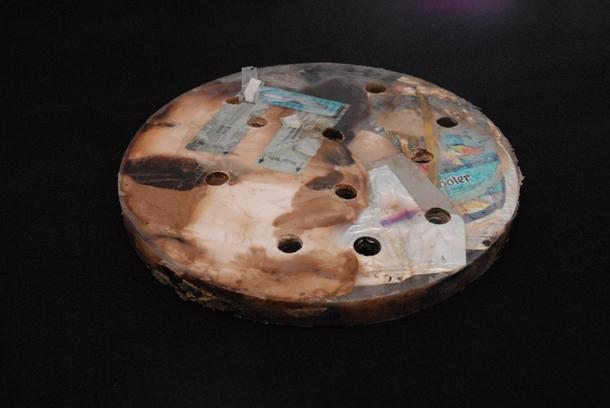NASA develops system to recycle space station waste into radiation-protecting tiles
This prototype shows what the tiles made from space waste will look like. The real thing will actually be square. (Photo courtesy of NASA.)
Astronauts working in orbit around the Earth generate waste and they have little room to store it.
Shipping it back to earth is costly, too, so NASA is working on a space station recycling program.
The NASA waste handling system crushes waste to a fraction of its original size, and if that brings to mind the trash compactor scene from Star Wars, John Fisher, a scientist with the Bioengineering Branch at NASA, says astronauts have nothing to worry about. The NASA trash compactor is much too small for a person.
Fisher says its designed to take many other things though, like food packaging, food scraps, tape, cans, paper, plastic bags and even what’s known as the astronaut diaper. All that waste is collected from around the spacecraft, then placed inside the heat melt compactor — an 8-to-10 inch cube-shaped device.
Once it’s filled, the device is run to crush the various items and heat them to remove any residual moisture the trash may contain.
“We continue heating and continue compacting it until you compact from maybe something about 10 inches deep to about one-tenth or slightly less than that of its volume,” Fisher said. “The temperature eventually goes up to something over 300, 400 Fahrenheit and the plastic that’s in there melts and encapsulates the waste. And then we cool it down and we bring it out and what you have is kind of a hard plastic tile with most of the other waste materials embedded inside of it.”
But NASA doesn’t make them so dense just to take up less space so they can be shipped back to Earth. The space agency is planning to use them as radiation shields inside the space station, Fisher said.
“Radiation protection works best when the substance you’re using contains a lot of hydrogen, and plastic contains a lot of hydrogen as well as carbon, which is still a relatively good material for radiation protection,” he added.
The benefit of reusing the trash is NASA doesn’t have to worry about adding to the growing mess of space junk in Earth’s orbit. Large pieces, travelling at som 20,000 mph, can potentially endanger human use of space, as well as satellites. Fortunately, low Earth orbit isn’t presently so crowded that the International Space Station isn’t in danger, Fisher said, but adding to the junk with astronaut trash would quickly complicate matters.
The idea of space trash recycling becomes even more important as NASA thinks about longer-range missions, including a manned trip to Mars, for example.
“The typical classic Mars mission is about three years long; it’s roughly about nine months out and stay there somewhere like a year and a half, and then nine months back,” he said. “So for long duration missions like that, yes, it’s extremely valuable to recycle as much as possible.”
